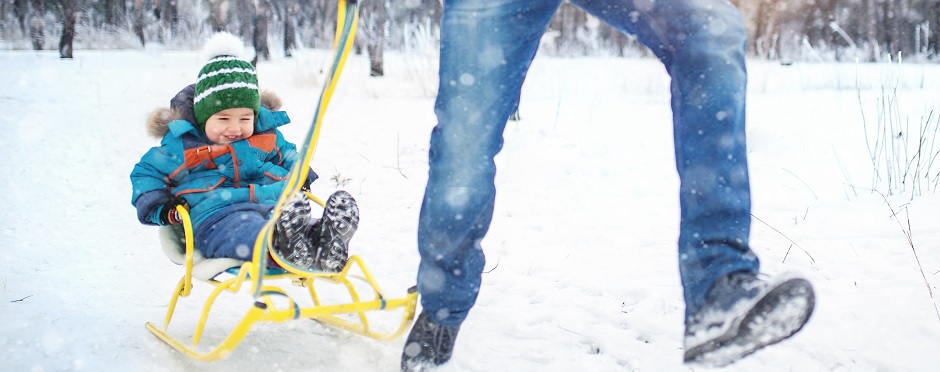
Seven Sledding Safety Tips
Leave a CommentSledding is a fun and common winter activity. However, it can lead to injuries if you are not careful. Sleds can travel at fast speeds over ice and snow. More than 20,000 kids younger than 19 are treated for injuries related to sledding each year. The most common injury seen from sledding is head injuries. Before you and your little ones head to the hills, here are seven tips to help keep you safe.
1. Sit while sledding
- Sitting facing forward is the safest way to sled. Going backward or lying forward increases the risk of injury as it limits the ability to steer and slow down as well as to avoid obstacles.
2. Check your surroundings for safety
- Check your sledding hill to ensure it is not too steep, or too uneven
- Never sled in woods or an area with a lot of trees
- Check to see how crowded the area is with other people sledding
- Do not sled near roads or water such as ponds or streams
- Do not sled in the dark
- Check for ice on the hill
3. Dress warm
- Protect yourself from the cold by wearing layers and having proper boots, gloves, and head coverings.
- For additional cold weather tips, be sure to read this blog.
- For more information on cold weather injuries including frostbite of frost nip, check out this blog.
4. Gear check
- Check your sledding gear to make sure your sled is in good condition, straps/handles are secure and unbroken. Ensuring your equipment is in good condition can help if you need to steer or try to slow the sled down while riding on it.
5. Wear a helmet
- Wearing a helmet can protect the head from injury should a child fall off the sled or collide with an object or another person.
6. Supervision
- Make sure children are monitored by an adult at all times when sledding as a precaution should an injury occur.
7. Warm Up
- Performing a warm-up before any physical activity can prepare your body prior to the upcoming activity. Sledding is oftentimes more than just sitting on the sled; you have to climb the hill with your sled to return to the top and you may even have to pull a sled with a child too. A dynamic warm-up is simply moving while you stretch and is beneficial before activities to prep your muscles. Examples of good dynamic stretches prior to sledding include high knees, arm swings, trunk twists and butt kicks.
With these tips in mind, sledding can remain a safe and fun winter activity for the whole family. Should aches and pains occur, be sure to schedule a free assessment at your nearest Athletico. Free assessments are available in-clinic and virtually through our Telehealth service.
Physical therapy is usually the thing you are told to do after medication, x-rays or surgery. The best way to fix your pain is to start where you normally finish – with physical therapy at Athletico.
The Athletico blog is an educational resource written by Athletico employees. Athletico bloggers are licensed professionals who abide by the code of ethics outlined by their respective professional associations. The content published in blog posts represents the opinion of the individual author based on their expertise and experience. The content provided in this blog is for informational purposes only, does not constitute medical advice and should not be relied on for making personal health decisions.
References:
1. “Nationwide Children’s News Releases.” Nationwide Children’s Hospital, www.nationwidechildrens.org/newsroom/news-releases?amp%3Bhits=1400&page=all&hits=1540.
2. Safety Tips: Sledding – Johns Hopkins All Children’s Hospital, www.hopkinsallchildrens.org/Patients-Families/Health-Library/HealthDocNew/Safety-Tips-Sledding?id=2649.
